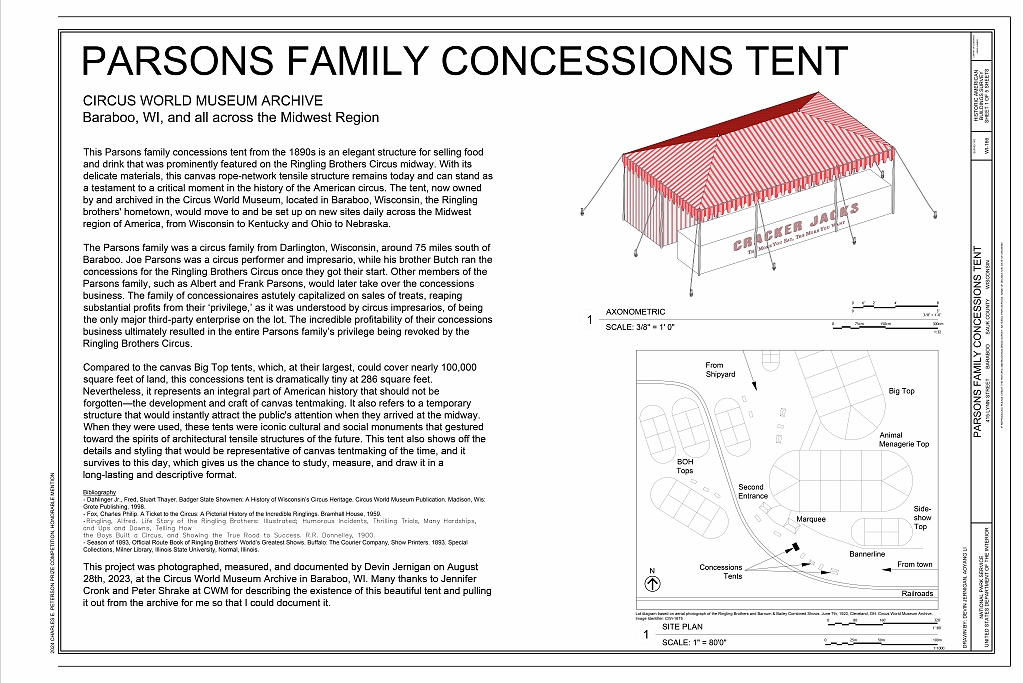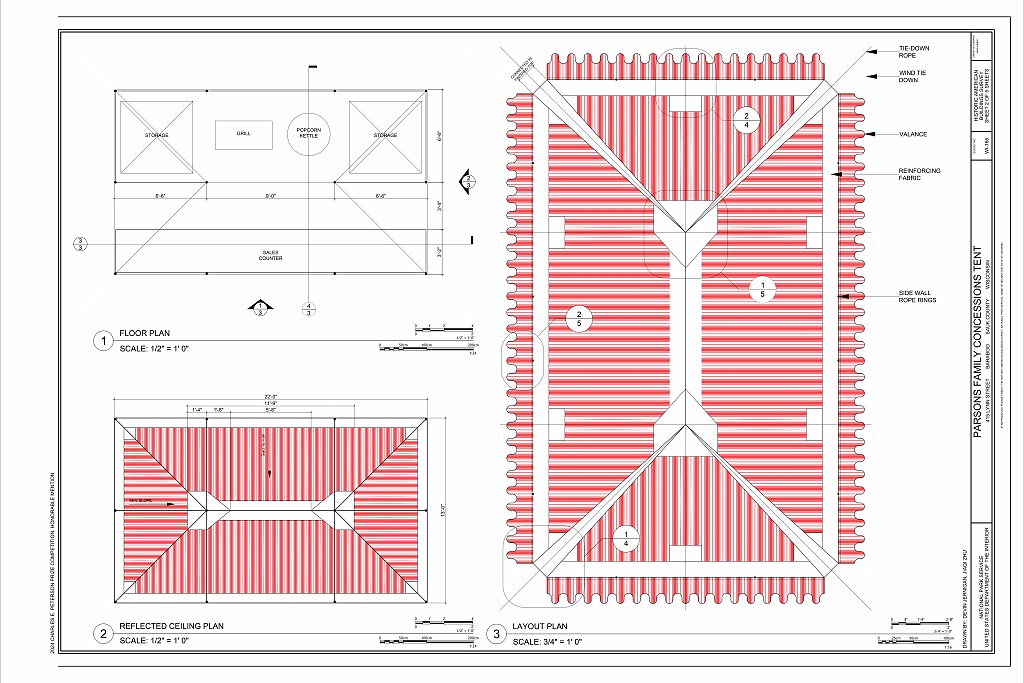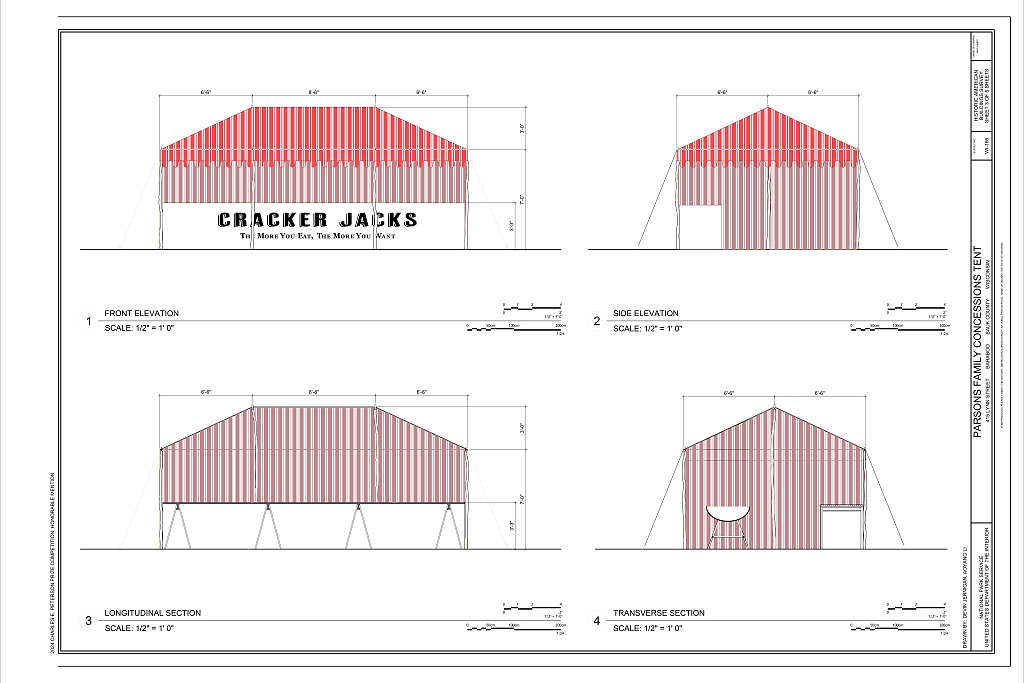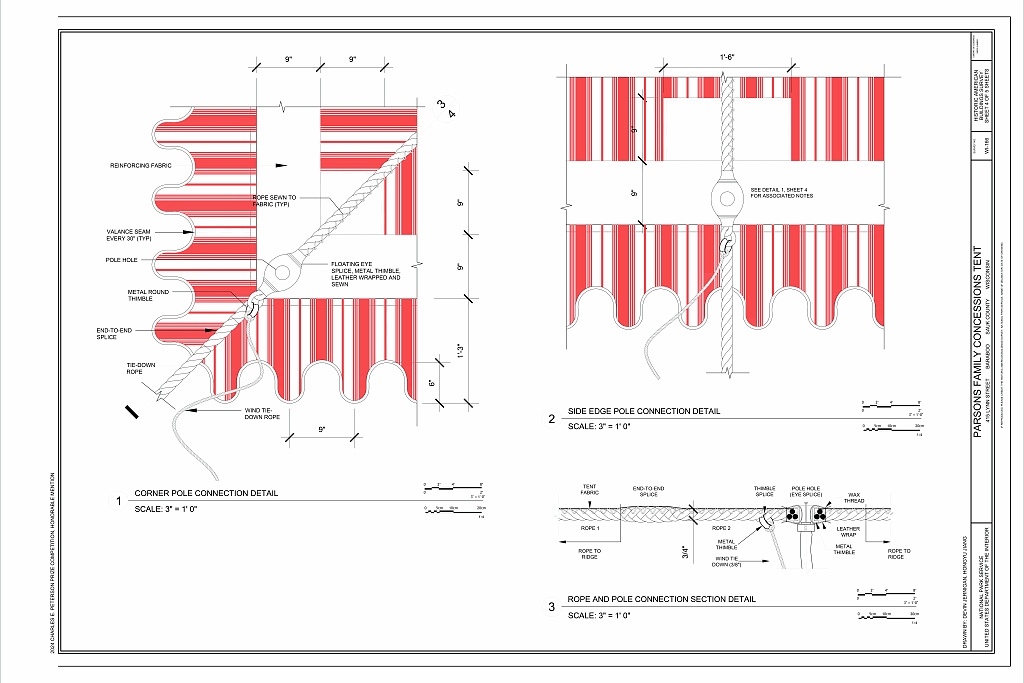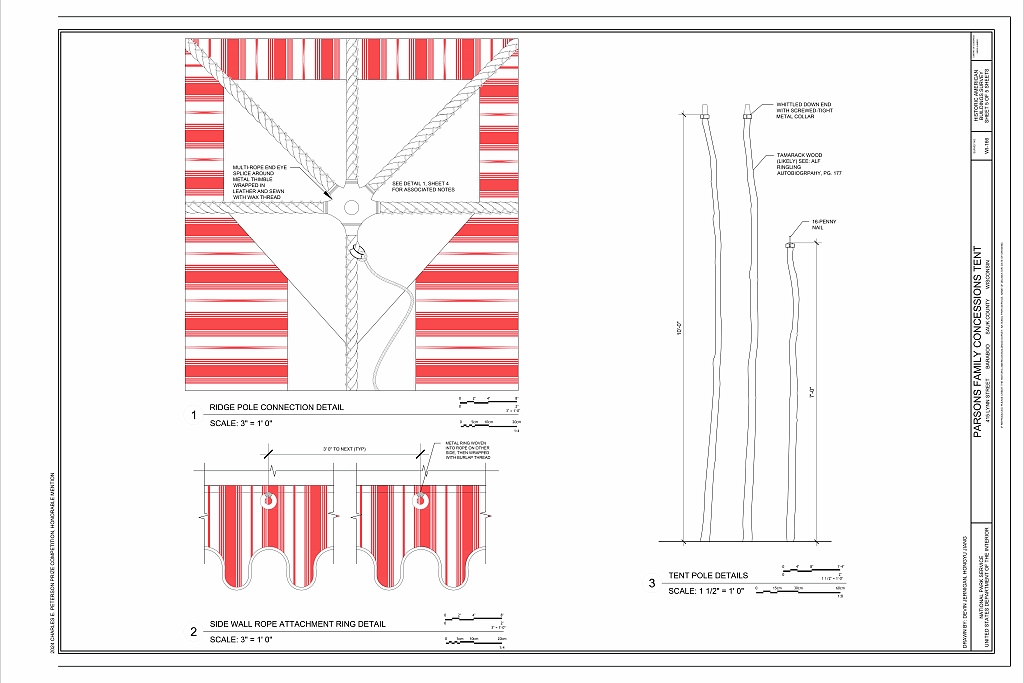Parsons Family Concessions Tent
CHARLES E. PETERSON PRIZE WINNER, HONORABLE MENTION
The National Park Service's Heritage Documentation Programs (HDP), The Athenaeum of Philadelphia, the American Institute of Architects (AIA), and the Association for Preservation Technology International (APT)
Link to the Drawings in the Library of Congress
The National Park Service's Heritage Documentation Programs (HDP), The Athenaeum of Philadelphia, the American Institute of Architects (AIA), and the Association for Preservation Technology International (APT)
Link to the Drawings in the Library of Congress
Location
Discovered in the CIRCUS WORLD MUSEUM ARCHIVE
Baraboo, WI, and all across the Midwest Region
Baraboo, WI, and all across the Midwest Region
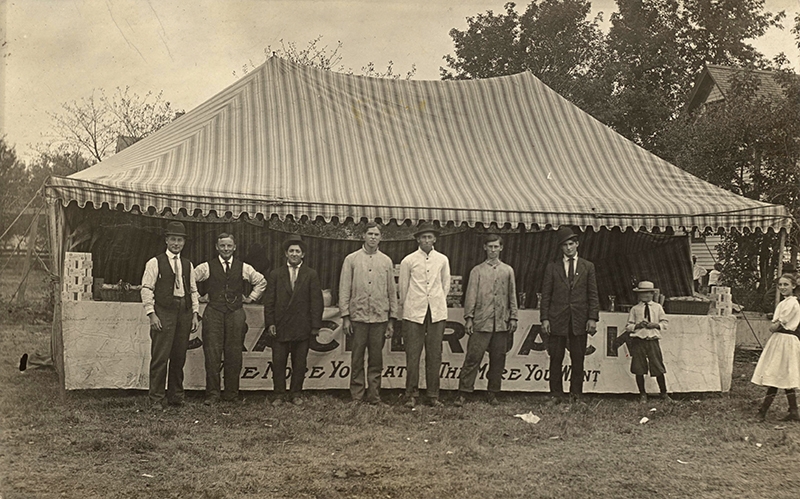
Image Rights: Circus World Museum archive
About the Project
This Parsons family concessions tent from the 1890s is an elegant structure for selling food and drink that was prominently featured on the Ringling Brothers Circus midway. With its delicate materials, this canvas rope-network tensile structure remains today and can stand as a testament to a critical moment in the history of the American circus. The tent, now owned by and archived in the Circus World Museum, located in Baraboo, Wisconsin, the Ringling brothers' hometown, would move to and be set up on new sites daily across the Midwest region of America, from Wisconsin to Kentucky and Ohio to Nebraska.
The Parsons family was a circus family from Darlington, Wisconsin, around 75 miles south of Baraboo. Joe Parsons was a circus performer and impresario, while his brother Butch ran the concessions for the Ringling Brothers Circus once they got their start. Other members of the Parsons family, such as Albert and Frank Parsons, would later take over the concessions business. The family of concessionaires astutely capitalized on sales of treats, reaping substantial profits from their ‘privilege,’ as it was understood by circus impresarios, of being the only major third-party enterprise on the lot. The incredible profitability of their concessions business ultimately resulted in the entire Parsons family’s privilege being revoked by the Ringling Brothers Circus.
Compared to the canvas Big Top tents, which, at their largest, could cover nearly 100,000 square feet of land, this concessions tent is dramatically tiny at 286 square feet. Nevertheless, it represents an integral part of American history that should not be forgotten—the development and craft of canvas tentmaking. It also refers to a temporary structure that would instantly attract the public's attention when they arrived at the midway. When they were used, these tents were iconic cultural and social monuments that gestured toward the spirits of architectural tensile structures of the future. This tent also shows off the details and styling that would be representative of canvas tentmaking of the time, and it survives to this day, which gives us the chance to study, measure, and draw it in a long-lasting and descriptive format.
Bibliography
- Dahlinger Jr., Fred, Stuart Thayer. Badger State Showmen: A History of Wisconsin’s Circus Heritage. Circus World Museum Publication. Madison, Wis: Grote Publishing, 1998.
- Fox, Charles Philip. A Ticket to the Circus: A Pictorial History of the Incredible Ringlings. Bramhall House, 1959.
- Ringling, Alfred. Life Story of the Ringling Brothers: Illustrated; Humorous Incidents, Thrilling Trials, Many Hardships, and Ups and Downs, Telling How the Boys Built a Circus, and Showing the True Road to Success. R.R. Donnelley, 1900.
- Season of 1893, Official Route Book of Ringling Brothers’ World’s Greatest Shows. Buffalo: The Courier Company, Show Printers. 1893. Special Collections, Milner Library, Illinois State University, Normal, Illinois.
- Fox, Charles Philip. A Ticket to the Circus: A Pictorial History of the Incredible Ringlings. Bramhall House, 1959.
- Ringling, Alfred. Life Story of the Ringling Brothers: Illustrated; Humorous Incidents, Thrilling Trials, Many Hardships, and Ups and Downs, Telling How the Boys Built a Circus, and Showing the True Road to Success. R.R. Donnelley, 1900.
- Season of 1893, Official Route Book of Ringling Brothers’ World’s Greatest Shows. Buffalo: The Courier Company, Show Printers. 1893. Special Collections, Milner Library, Illinois State University, Normal, Illinois.
Acknowledgements
This project was photographed, measured, and documented by Devin Jernigan on August 28th, 2023, at the Circus World Museum Archive in Baraboo, WI. Many thanks to Jennifer Cronk and Peter Shrake at CWM for describing the existence of this beautiful tent and pulling it out from the archive for me so that I could document it.
The Drawings
